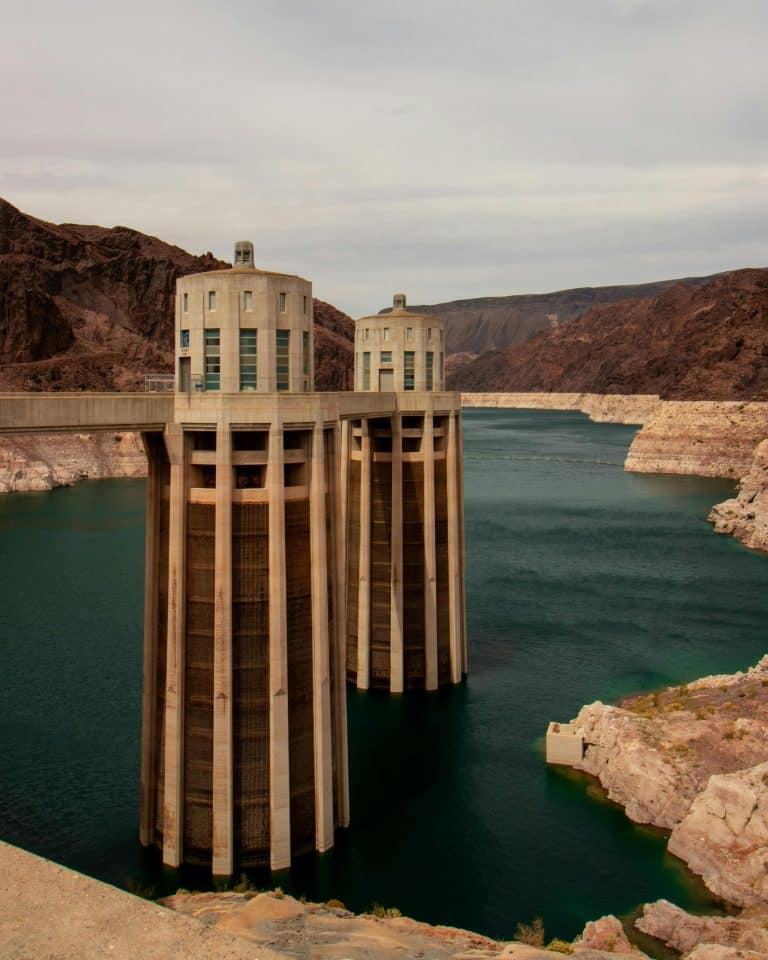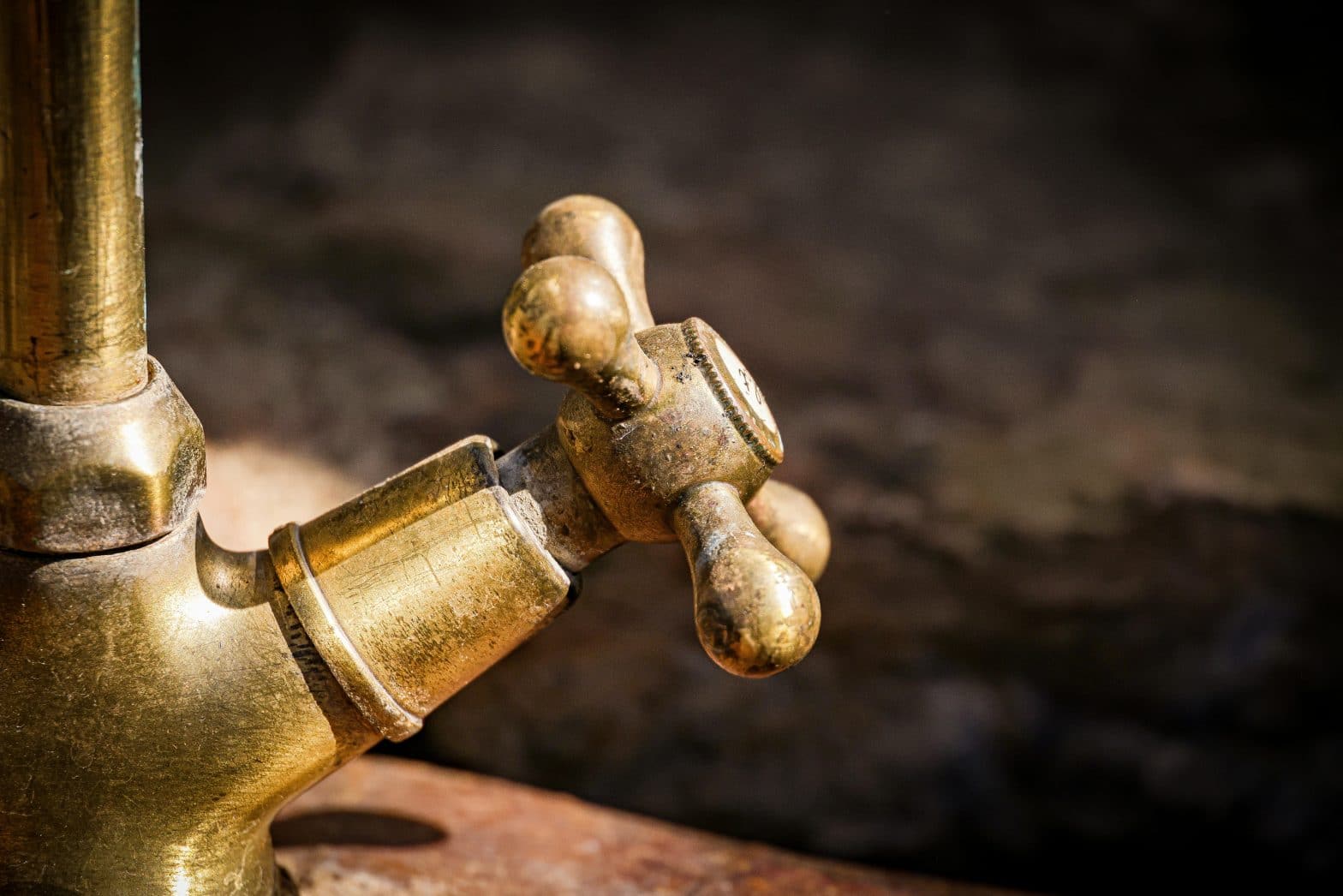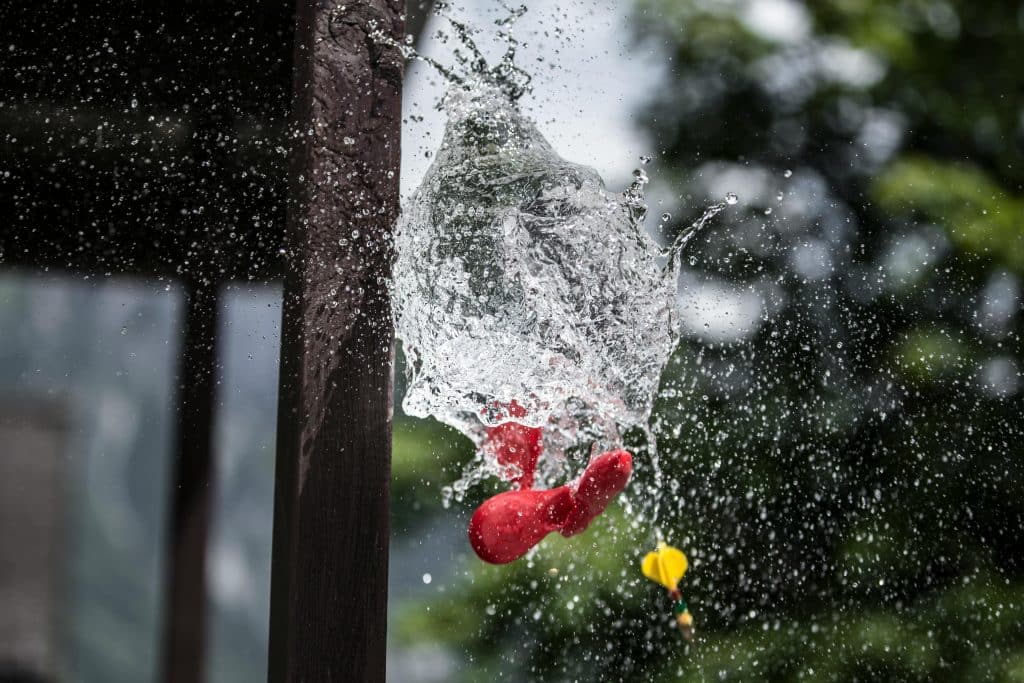Water pressure problems in Santa Rosa? Here’s what may be causing it. Water pressure can drop if the city is working on pipes or if valves aren’t open all the way. Homes in upper elevations may experience lower pressure than those in lower areas. Other times, issues inside the house, such as clogged aerators, old fixtures, or malfunctioning pressure regulators, can be to blame for weak flow. Water meter faults or issues with pumps in some neighborhoods can play a part as well. Others experience it following droughts or overuse in their vicinity. The body will explain how to test for each cause, as well as provide advice on what to do next if you encounter these issues.
Key Takeaways
- Water pressure problems can be caused by various factors, including municipal supply fluctuations, corroded pipes, hidden leaks, faulty fixtures, or pressure regulator failures. Knowing the source is the key to working solutions.
- Routine maintenance of plumbing from pipes to fixtures to valves identifies early warning signs and keeps water flowing without major disruptions.
- Seasonal changes, aging infrastructure, and hard water minerals may all be culprits behind pressure drops, particularly in areas like Santa Rosa with unique water system challenges.
- Basic troubleshooting, including testing several faucets, confirming the main valve is fully open, and observing water meter activity, can assist in identifying pressure issues on your end.
- Expert plumbing assistance is best when do-it-yourself solutions don’t fix persistent problems or when major repairs are required to prevent additional damage.
- Ahead of time, upkeep, water-wise habits, and immediate fixes minimize utility waste, defend appliances, and shield your home from structural destruction.

Why Your Water Pressure Drops
Water pressure drops can throw a wrench into your daily routine and indicate more serious plumbing issues, such as a faulty pressure regulator. A number of things, both on the inside and outside of your home, could be at work, leading to low water pressure problems.
1. Municipal Supply
The municipal water supply fluctuates, particularly during high-demand periods when many households simultaneously use water. If you notice low water pressure issues in the mornings or evenings, it’s likely due to this increased demand. Local water policies often dictate the pressure levels delivered to residences, especially during drought conditions or conservation initiatives. In regions facing drought, water companies may reduce supply or adjust system flow, which can significantly impact pressure. This situation can lead to common low water pressure problems today. If you suspect a water pressure issue, it’s wise to check with your provider about any potential permanent problems. If your neighbors are facing the same low-pressure problems, the issue is likely external to your property.
2. Corroded Pipes
As pipes age, they inevitably corrode, particularly if they are galvanized steel. This corrosion can lead to a low water pressure problem, as rust and mineral deposits on the inside of the pipes inhibit water flow. Copper pipes can corrode more slowly, but it’s essential to consider how old your pipes are. Routine inspections are key to catching water pressure issues before they lead to leaks or blockages. If a plumber discovers significant corrosion, water pressure repair may be required to return pressure to normal. Regular maintenance can slow this process and keep water flowing adequately.
3. Hidden Leaks
Hidden leaks, such as behind walls or under floors, can quietly decrease water pressure, leading to common low water pressure problems. Tiny leaks accumulate and reduce pressure throughout the plumbing system. Turn off all taps and check your water meter; if it moves, there is a water pressure issue. Repairing these leaks with a water pressure repair service brings back full pressure and prevents larger issues.
4. Faulty Fixtures
A single slow faucet or showerhead often signals a specific fixture issue rather than a whole-house problem. Blocked flow can result from clogged aerators or sediment buildup in the faucet, leading to low water pressure problems. Valves or fittings may wear out, causing drops in pressure levels. Regularly clean aerators and replace worn fixtures as needed. Also, ensure your shutoff valves are fully open to allow adequate water pressure.
5. Pressure Regulator Failure
A water pressure regulator maintains home water pressure within the optimal range, typically between 2 and 5.5 bar (30 to 80 psi). If it breaks or isn’t adjusted properly, you could experience low water pressure issues. Testing the regulator can determine if it is to blame for these pressure levels. Once found, replacement is frequently the best fix for a faulty pressure regulator. For stubborn problems, a licensed plumber can tune up or fix the configuration to get it flowing again.
Santa Rosa’s Unique Challenges
Santa Rosa’s water pressure issues stem from a combination of aging pipes, changing seasonal demands, and difficult local water conditions. Factors such as the city’s soil and geology also contribute to the likelihood of plumbing problems. Previous incidents, like the Tubbs fire, have impacted the plumbing system, affecting water pressure and even polluting certain regions. Understanding what makes Santa Rosa unique helps explain why water pressure can vary from one residence to another.
Aging Infrastructure
A lot of Santa Rosa’s water infrastructure is aging, particularly in Fountaingrove neighborhoods, where pipes and meters have experienced degradation. Once pipes age, leaks multiply, which can lead to low water pressure problems throughout entire blocks. The Tubbs fire compromised many plastic pipes and delivery systems, resulting in contamination and additional system vulnerability. These plumbing issues have caused interruptions not only from necessary renovations but also from last-minute fixes after leaks or cracks. Staying on top of city updates is crucial, as local officials have implemented plans to replace destroyed lines and modernize systems. Public consciousness matters, as enthusiasm for these initiatives can help accelerate repairs and prevent future troubles.
Seasonal Demands
Hot, dry months in Santa Rosa are unique, as they lead to increased water usage, particularly in gardens and lawns. During the summer, many people water their gardens and fill pools, which can result in low water pressure issues at peak periods. Scheduling your watering for early morning or late evening, when fewer people are drawing water, can help mitigate this water pressure problem. Additionally, waiting to use dishwashers or washing machines until off-peak times aids in distributing water demand, thus preventing additional strain on the municipal water system. Simple actions like water pressure repair service for leaks and installing water-saving fixtures can assist homes in managing these seasonal swings.
Hard Water Minerals
Santa Rosa’s water is considered ‘hard’ because it picks up minerals from our local soils, leading to low water pressure problems over time. Calcium and magnesium accumulate in the pipes, constricting them and impeding flow, which can become a significant water pressure issue. Testing for hardness is the initial step, and easy kits are available everywhere. If accumulation is an issue, a filter or softening system can help keep pipes cleaner. Routine plumbing inspections and cleaning assist as well, maintaining adequate water pressure. Hard water’s impact isn’t limited to low flow; it can reduce the lifespan of water heaters and appliances. Understanding hard water hazards aids homeowners in scheduling routine maintenance and preventing expensive fixes later.
Diagnose Your Pressure Problem
Low water pressure issues can drag down your chores and turn your day upside down. To get to the source of this water pressure problem, begin by sampling water pressure at multiple outlets within your residence, inspecting key plumbing fixtures, and observing device functionality. These steps assist in diagnosing whether the issue is a local fixture problem or a plumbing system problem.
Check Multiple Faucets
To determine if you’re experiencing low water pressure issues in just one location or throughout your entire plumbing system, try different taps. For instance, if the kitchen sink has adequate water flow but the bathroom tap runs slowly, the common culprit might be a clogged aerator or sediment in the faucet. Unscrewing the aerator and rinsing it out can often resolve this water pressure problem.
However, if multiple plumbing fixtures are affected, take note of which ones are struggling and when the issue arises. Observe how water sprays from various faucets, showers, garden hoses, and laundry tubs. If you notice trends indicating low-pressure problems across several areas, it’s best to call a plumbing professional to address the underlying cause effectively.
Inspect Your Main Valve
Diagnosing your water pressure issue often starts with checking valves, which can sometimes be only slightly open after maintenance, choking water flow to the entire house. Inspect for leaks or damage around the main water valve and any blockages. If your home’s valve is outdated, it might be time to replace it with a more reliable option. Rust or corrosion, along with a valve that doesn’t turn smoothly, should prompt a plumbing professional to inspect it.
Read Your Water Meter
Your water meter provides hints about water pressure issues and leaks. By recording readings over several days, you can identify surges or declines in consumption, which might indicate a water pressure repair need. If you notice large variations, compare your readings to previous bills or use the meter as a benchmark for what’s normal in your plumbing system. If things feel really out of whack, contact your water utility for guidance or assistance.
Note Appliance Performance
Washing machines, dishwashers, and water heaters require adequate water pressure to function optimally. Look for sluggish fill times or partial cycles, as these could indicate a water pressure issue. If these machines struggle during peak demand, such as in the morning or evening, it’s a sign to schedule maintenance for any strained appliance. Upgrading to newer, more efficient versions will help manage pressure levels and save on water bills.

When DIY Fixes Fall Short
Pressure issues in homes can begin as something so simple, but spiral into a complex mess quickly. Simple things like looking for closed valves, cleaning aerators, or replacing old washers might assist, but on occasion, these fixes do not address the genuine water pressure issue. Most of the time, it’s invisible. Corrosion inside pipes, mineral buildup, or a faulty pressure regulator aren’t things you can remedy with fast home remedies. If the water pressure remains low after these measures, it could indicate a more serious problem that is beyond the scope of these basic tools. Taking a look at the water pressure gauge is a good first step. Normal readings fall between 276 and 414 kilopascals (kPa) or 40 to 60 psi. If the number is outside this range or if pressure bounces up and down, a bigger issue may be afoot.
|
DIY Fixes |
Professional Solutions |
|
Clean aerators |
Inspect and replace corroded pipes |
|
Check for closed valves |
Diagnose hidden leaks or clogs |
|
Adjust or replace shower heads |
Test and replace pressure regulators |
|
Monitor water usage |
Full-system inspection and maintenance |
The Hidden Cost of Neglect
Unresolved water pressure issues are about more than just that frustrating stream from your showerhead. Structural damage, high water pressure, utility expenses, appliance breakdown, and water damage are all long-term consequences of neglect. These water pressure concerns directly affect homes and utilities, particularly in Santa Rosa-type cities, but the lessons are worldwide.
Structural Damage
Water pressure issues can manifest themselves in the form of cracks in walls, warped flooring, or peeling paint, any of which can indicate moisture intrusion. A minor leak behind a wall does not feel pressing, but can easily escalate into a major water pressure issue, necessitating repairs in the $5,000+ range. Water that seeps into foundations compromises structural integrity and may encourage mold growth, further jeopardizing home safety. Routine inspections at a minimum once a year can expose concealed leaks or plumbing defects before they escalate. Basic upkeep, whether it’s tightening loose fittings or replacing old pipes, helps keep plumbing systems dependable and reduces potential hazards. Knowing what to look for and catching low water pressure problems early is key to protecting a home’s value.
Utility Waste
- Fix leaks as soon as they’re found.
- Use water-saving aerators and dual-flush toilets.
- Install high-efficiency showerheads.
- Monitor meter readings monthly to spot unexpected spikes.
- Choose appliances with low water consumption ratings.
A leak can squander some 38,000 liters (10,000 gallons) annually, per the EPA. Low water pressure problems can boost energy consumption by 25 percent, sending up utility bills and adding stress to resources. Monitoring water use trends assists in identifying trouble areas and preparing for renovations. High mineral content can lead to low water pressure issues, so cleaning pipes and fixtures regularly can help restore water efficiency.
Appliance Strain
Low water pressure issues waste energy by overworking your washing machines, water heaters, and dishwashers. These appliances are compelled to operate overstretched cycles, increasing energy consumption and decreasing lifespan. Easy maintenance, such as changing filters and inspecting hoses, can help. Investing in quality plumbing fixtures encourages better flow and less stress on appliances. Not every appliance works well with every plumbing system. A plumbing professional can help you pair up appliances and plumbing for optimal outcomes.
Proactive Plumbing Maintenance
Nothing beats routine care as a way to prevent low water pressure and other plumbing misfortunes. Being proactive keeps it out of the way and, therefore, less expensive. Well-maintained plumbing is a stress reliever, too, because it ensures that water flows steadily and problems are stopped before they get big.
- Check all faucets and fixtures regularly. Check for leaks, rust, or buildup that can impede water. Remove aerators and showerheads to clean out mineral or debris clogs. This easy fix can boost flow and pressure at the tap.
- Inspect water pressure regulators every few years. These little beauties safeguard your pipes by maintaining pressure within a safe zone. They generally hold up for 10 to 15 years, but they can fail. Swapping outdated regulators maintains consistent safe pressure.
- Be on the lookout for sediment buildup in your plumbing. Hard water or aging pipes can introduce grit and scale, which impede flow. Flushing pipes and cleaning fixtures removes the buildup and keeps water moving well. If you experience a consistent decrease in pressure, sediment might be the culprit.
- Stagger water usage throughout the house. If you have multiple taps or appliances running, it can lower the pressure. If possible, really try to stagger showers, laundry, and dishwashing. This keeps pressure more even and prevents abrupt drops.
- Get to know the usual plumbing issues around you. Certain areas, such as Santa Rosa, might contend with hard water, old pipes, or unique local restrictions. Being in the know makes it easier to identify red flags, such as strange clunking or sluggish sinks.
- Engage a reliable plumbing company for checkups. Experienced plumbers detect leaks, test pressure, and recommend repairs. They’re able to repair minor issues before they escalate. With a trusted squad on call, it’s a game-changer in emergencies, so issues get resolved quickly.
Routine plumbing inspections prolong the lifespan of pipes and components. They reduce major repairs and maintain water pressure. For the majority of homes, annual inspections catch most problems early. Proactive care keeps day-to-day life flowing unimpeded and is less prone to being disrupted by unexpected plumbing disasters.
Conclusion
Low water pressure in Santa Rosa pops up for many different reasons. Old pipes, leaks, or city supply work can all cause weak flow at your tap. Local factors such as soil, tree roots, and major weather fluctuations contribute. Checking for leaks or old valves helps pinpoint the reason quickly. Addressing minor problems now saves repair costs and prevents big issues. Calling a pro makes sense if quick fixes don’t do the trick. Staying ahead with plumbing inspections saves time, reduces stress, and keeps the water pressure robust. For reliable flow and fewer headaches, connect with a trusted plumber in Santa Rosa and stay one step ahead of upcoming plumbing chaos.
Frequently Asked Questions
What causes sudden water pressure drops in homes?
These sudden drops in water pressure can be caused by leaks, clogged pipes, faulty valves, or issues with your local water supply system. Addressing these low water pressure problems promptly can save you from additional damage and help return your water flow to steady levels.
Are water pressure problems common in Santa Rosa?
Water pressure problems in Santa Rosa often stem from aging infrastructure and drought conditions, making routine inspections vital for addressing low water pressure issues and ensuring adequate water pressure.
How can I check my home’s water pressure?
Try using a pressure gauge on an outdoor faucet to check for water pressure issues. Typical pressure spans from 275 to 550 kPa, which is 40 to 80 psi, indicating potential low water pressure problems requiring attention.
When should I call a professional plumber?
If you experience consistent low water pressure issues, leaks, or if it doesn’t improve with small plumbing jobs, call a licensed plumber for effective water pressure repair service.
Can ignoring water pressure issues lead to bigger problems?
Ignoring water pressure issues, such as low water pressure problems, could lead to pipe damage, water waste, and increased water bills. Acting quickly supports your plumbing system and saves you money over time.
What are some easy ways to maintain good water pressure?
Remove and clean your faucet aerators, check for hidden leaks, and get regular plumbing inspections. These health checks bolster steady water pressure and avoid plumbing emergencies.
Is low water pressure always a sign of a serious issue?
Not necessarily. Other times, the solutions are more complex and expensive. If low water pressure problems persist, it could indicate a larger plumbing issue requiring professional attention.
Water Services in Santa Rosa — Fast, Reliable, and Trusted Experts
When water problems hit your home, quick action matters. Whether you’re dealing with a leak, low pressure, or a burst pipe, Yorkshire Plumbing delivers fast, professional water service throughout Santa Rosa.
Our licensed plumbers specialize in diagnosing and repairing all types of water line issues using advanced equipment and proven methods. From pinpointing hidden leaks to replacing old pipes, we provide dependable solutions that protect your home and restore proper flow.
With nearly a decade of experience serving Sonoma County, we’ve built a reputation for honest communication, quality workmanship, and long-lasting results. We don’t just fix the problem, we make sure it stays fixed.
From emergency water line repairs to full system upgrades, Yorkshire Plumbing is your trusted, family-owned choice for reliable water services in Santa Rosa. Contact us today for a free estimate. We offer same-day service whenever possible and are always ready for urgent calls.
Disclaimer
The information provided on this website is for general informational and educational purposes only and is not intended as professional plumbing or construction advice. You should consult with a licensed plumber or qualified contractor for guidance specific to your home or situation. Do not rely solely on the content of this site to make decisions about plumbing repairs, installations, or maintenance. While we strive to keep the information current and accurate, it may not reflect the most recent industry standards or code requirements. Yorkshire Plumbing & Drain Services disclaims all liability for any actions taken or not taken based on the content of this site, to the fullest extent permitted by law.






